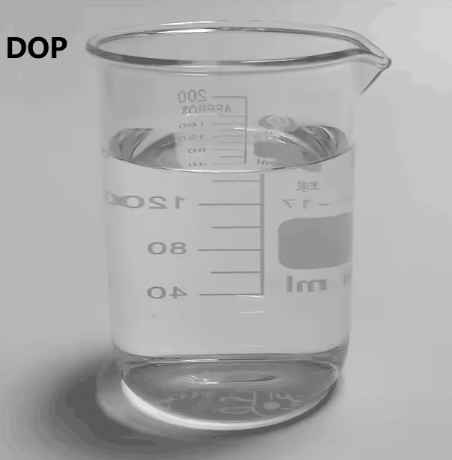Что такое пластификаторы? Объяснение базовых функций
Определение пластификаторов и их основной цели
Пластификаторы — это важные компоненты, которые добавляются для повышения пластичности или текучести материала, особенно ПВХ и других полимеров. Пластификаторы представляют собой разновидность добавок к пластмассам, которые уменьшают межмолекулярные силы, встраиваясь между полимерными цепями, делая материал более гибким и удобным в обращении. Такая гибкость имеет большое значение, поскольку пластификаторы могут снизить температуру переработки пластмасс примерно на 30%, а поставщики сырья требуют тщательного контроля температур переработки. Это снижение температуры не только повышает эффективность производства, но и позволяет экономить энергию (и спасти планету) в процессе производства.
Как пластификаторы улучшают гибкость материалов
Пластификаторы оказывают сильное влияние на механические свойства полимеров за счёт снижения температуры стеклования (Tg) и повышения гибкости. Этот модификатор особенно полезен для упаковочных материалов, игрушек и автомобильной продукции, где могут потребоваться гибкие материалы. Исследования показали, что добавление определённых пластификаторов может увеличить относительное удлинение при разрыве на 20–50%, местами значительно повышая прочность и полезность материалов. Такая механическая гибкость демонстрирует важность пластификаторов в обеспечении требуемой функциональности и соответствия нормам безопасности продукции.
Роль пластификаторов в обрабатываемости
В полимерной перерабатывающей промышленности пластификаторы играют ключевую роль в повышении пластичности пластмасс, облегчая процесс экструзии или формования в целом. ЗНАЧИТЕЛЬНО СНИЖАЯ ВЯЗКОСТЬ, пластификаторы позволяют производителям с оптимальной точностью и стабильностью получать требуемую форму, что приводит к улучшению процесса переработки. Согласно имеющимся данным, можно сделать вывод, что использование эффективных пластификаторов в некоторых отраслях может сэкономить до 15% затрат на переработку. Такие экономически выгодные факторы, наряду с улучшенной переработкой материалов и качеством продукции, демонстрируют незаменимую роль пластификаторов в современных промышленных применениях.
Обычный Пластификатор Типы для начинающих
DOTP: Альтернатива фталатам, дружелюбная для новичков
ДИОКТИЛТЕРЕФТАЛАТ (DOTP) — это органическое соединение с формулой C6H4(CO2C8H17)2. Он обладает свойствами, схожими со свойствами фталатов, но имеет дополнительное преимущество — несколько меньшую токсичность, что делает его привлекательным выбором для потребительских товаров, предназначенных для использования при возможных рисках для здоровья. Одной из важных особенностей DOTP является его высокая степень соответствия нормативным требованиям, что позволяет применять его во многих областях без оговоренных экологических и медицинских рисков, связанных с эфирами фталевой кислоты. Исследования показывают, что DOTP сохраняет свойства, аналогичные типичным представителям этого класса, поэтому его можно рассматривать в качестве альтернативного материала для применения в смесительных процессах.
DINP: Низкая летучесть для универсальных применений
DINP, диизононилфталат, низколетучий и слабый запах, применяется в строительных материалах и автомобильной промышленности. Благодаря широкому температурному диапазону применения он сохраняет эффективность в течение длительного времени, устойчив к быстрому испарению или деградации. Дополнительным преимуществом является то, что DINP способствует увеличению срока службы продукции, значительно повышая её прочность и устойчивость к атмосферным воздействиям. Использование DINP в некоторых отраслях, например в производстве пластмасс, обеспечивает повышенную стойкость к износу и изгибу при сохранении высокой гибкости и прозрачности. Именно низкая летучесть делает DINP отличным выбором на рынках, где требуются гибкие решения.
DOA и Цитраты: Более Безопасные Варианты для Чувствительного Использования
DOA (диоктиладипат) и цитратные эфиры обычно ассоциируются с безопасностью, особенно в чувствительных областях применения, таких как детские товары или определённые виды потребительских товаров. Их биооснованная природа отвечает растущему спросу на устойчивость и нетоксичность. Кроме того, они отличаются от других пластификаторов превосходной гибкостью и низкой скоростью миграции, что делает их подходящими для применений с высоким уровнем конечного использования. По мере продвижения к экологически чистым альтернативам DOA и цитратные эфиры представляются как экологически устойчивые варианты, соответствующие нормативным требованиям и обеспечению безопасности потребителей.
Ключевые критерии отбора для новых пользователей
Приоритизация низкой летучести для долговечности
При выборе пластификаторов важно учитывать их способность растворять, низкую вязкость, гибкость при низких температурах, а также низкую летучесть и долгий срок службы, которые со временем обеспечивают экономическое преимущество. Пластификаторы с низкой летучестью слабо испаряются, особенно при использовании в условиях высоких температур. На практике предпочтение отдается вариантам с низкой летучестью, поскольку они способны сохранять эксплуатационные свойства материала в течение длительного времени — даже несколько лет. Это позволяет значительно сэкономить за счёт исключения необходимости частой замены или ремонта.
Обеспечение совместимости с базовыми полимерами
Совместимость пластификаторов и основных полимеров чрезвычайно важна для предотвращения таких проблем, как фазовое расслоение или деградация. Совместимость имеет решающее значение, поскольку она определяет механическое поведение и эксплуатационные характеристики получаемого изделия. Несовместимые комбинации могут значительно снизить прочность продукта — сообщалось о снижении до 30%. Следовательно, совместимость также должна быть одним из критериев при выборе лопастей, чтобы обеспечить высокую производительность и долговечность продукта.

Баланс стоимости и производительности
При выборе пластификаторов новым пользователям необходимо тщательно сопоставлять стоимость и производительность, чтобы не пожертвовать качеством ради экономии. Чувствительность к стоимости может привести к выбору более дешёвых материалов, однако игнорирование долгосрочных последствий в будущем может обернуться более высокими расходами. Анализ отраслевых данных показал, что компании, инвестирующие в наилучшие доступные пластификаторы, сталкиваются с меньшим количеством отказов и получают более высокий уровень удовлетворённости клиентов.
Безопасность и соответствие экологическим нормам
Понимание опасений относительно воздействия на здоровье
Последствия воздействия пластификаторов на здоровье также весьма значительны, особенно с точки зрения нарушения эндокринной системы и токсичности. Пластификаторы являются основным объектом медицинских и экологических исследований из-за связанных с ними рисков для здоровья, таких как рак и повреждение репродуктивной системы. Расширение базы знаний способствует внедрению прогрессивных мер безопасности при разработке продукции, что приводит к постоянному развитию отрасли.
Соблюдение норм ЕС REACH и EPA
Нормативные акты ЕС по REACH и Агентства по охране окружающей среды США (EPA) гарантируют, что пластификаторы подвергаются наиболее тщательной проверке со стороны органов власти. Требования законодательства означают, что производитель должен представить подробные данные о рисках и устранить их до выхода продукта на рынок. Невыполнение этих требований может привести к крупным штрафам и дорогостоящим перебоям в работе, поэтому соблюдение нормативных требований является ключевым аспектом производственной стратегии.
Экологичные альтернативы для начинающих
В ответ на растущий спрос на устойчивые материалы экологически чистые пластификаторы, такие как биоосновные альтернативы, набирают популярность. Они не только решают вопросы здоровья, но и способствуют экологической устойчивости. Недавние исследования показывают, что использование экологичных пластификаторов может значительно снизить негативное воздействие на окружающую среду, уменьшив его на 50% в определенных применениях.
Будущие тенденции в технологии пластификаторов
Биоосновные пластификаторы для устойчивых решений
Тенденция к использованию пластификаторов на основе биосырья продолжает набирать обороты, поскольку рынки ищут экологически чистые варианты, не уступающие по своим характеристикам традиционным аналогам. Эти пластификаторы также производятся из возобновляемого сырья, что минимизирует зависимость от ископаемых ресурсов. В отрасли появляются новые разработки, подтверждающие, что в соответствующих случаях биопластификаторы могут превосходить традиционные варианты, что делает их привлекательной и перспективной альтернативой. Растущая экологическая осведомлённость стимулирует спрос на устойчивые продукты, что, в свою очередь, усиливает потребность в биопластификаторах в различных отраслях промышленности.
Высокопроизводительные инновации без фталатов
Высокопроизводительные пластификаторы без фталатов: В последние годы достигнут значительный прогресс в области высокопроизводительных пластификаторов без фталатов. Эти заменители разработаны так, чтобы имитировать свойства традиционных пластификаторов, не оказывая их известного вредного воздействия, что способствовало их более широкому внедрению в отраслях, где важна безопасность, таких как автомобильная промышленность и производство медицинских устройств. Последние статистические данные показывают, что уровень применения продуктов без фталатов вырос на 25% за последние пять лет, что свидетельствует о кардинальной смене направления отрасли в сторону безопасных альтернатив пластификации.
Умные пластификаторы для адаптивных применений
Молекулярно умные пластификаторы находятся на передовом крае этого захватывающего нового этапа в науке о материалах. Эти умные пластификаторы помогают материалам адаптироваться к условиям окружающей среды и повышают гибкость пластмасс для соответствия требованиям конкретного применения и уровню эксплуатационных характеристик. Они способны изменяться по мере необходимости, что может дать компании преимущество в отраслях, где ценятся эффективность и оперативность. В настоящее время выяснилось, что данная проблема может быть удовлетворительно решена таким образом, что умный пластификатор сможет обеспечить преимущества в плане повышения производительности, расширения сфер применения и даже инноваций в функциях и свойствах, связанных с пластификацией материалов, при этом умный пластификатор будет обладать повышенной эффективностью в данной пластификации.
Часто задаваемые вопросы
Что такое пластификаторы и почему они важны?
Пластификаторы — это добавки, которые увеличивают гибкость и текучесть материалов, особенно полимеров, таких как ПВХ, улучшая их применимость в различных областях.
Как пластификаторы влияют на температуру стеклования материалов?
Пластификаторы снижают температуру стеклования (Tg) полимеров, делая их более гибкими и долговечными для различных применений.
Какие пластификаторы предлагают низкую токсичность и экологические преимущества?
DOTP и биоосновные альтернативы популярны благодаря своей низкой токсичности и экологическим преимуществам, что делает их подходящими для потребительских товаров, ориентированных на здоровье и устойчивость.
Какова важность обеспечения совместимости между пластификаторами и базовыми полимерами?
Обеспечение совместимости критически важно для предотвращения проблем, таких как фазовое разделение и деградация, гарантируя оптимальную производительность и долговечность продукта.
Существуют ли регулирования, управляющие использованием пластификаторов?
Да, регулирования, такие как REACH ЕС и Управление охраны окружающей среды США, регулируют использование пластификаторов, требуя оценки безопасности и соблюдения норм для избежания штрафов.
Содержание
- Что такое пластификаторы? Объяснение базовых функций
- Обычный Пластификатор Типы для начинающих
- Ключевые критерии отбора для новых пользователей
- Безопасность и соответствие экологическим нормам
- Будущие тенденции в технологии пластификаторов
-
Часто задаваемые вопросы
- Что такое пластификаторы и почему они важны?
- Как пластификаторы влияют на температуру стеклования материалов?
- Какие пластификаторы предлагают низкую токсичность и экологические преимущества?
- Какова важность обеспечения совместимости между пластификаторами и базовыми полимерами?
- Существуют ли регулирования, управляющие использованием пластификаторов?

